- Region
- Águilas
- Alhama de Murcia
- Jumilla
- Lorca
- Los Alcázares
- Mazarrón
- San Javier
-
ALL AREAS & TOWNS
- AREAS
- SOUTH WEST
- MAR MENOR
- MURCIA CITY & CENTRAL
- NORTH & NORTH WEST
- TOWNS
- Abanilla
- Abarán
- Aguilas
- Alamillo
- Alcantarilla
- Aledo
- Alhama de Murcia
- Archena
- Balsicas
- Blanca
- Bolnuevo
- Bullas
- Cañadas del Romero
- Cabo de Palos
- Calasparra
- Camping Bolnuevo
- Campo De Ricote
- Camposol
- Canada De La Lena
- Caravaca de la Cruz
- Cartagena
- Cehegin
- Ceuti
- Cieza
- Condado de Alhama
- Corvera
- Costa Cálida
- Cuevas De Almanzora
- Cuevas de Reyllo
- El Carmoli
- El Mojon
- El Molino (Puerto Lumbreras)
- El Pareton / Cantareros
- El Raso
- El Valle Golf Resort
- Fortuna
- Fuente Alamo
- Hacienda del Alamo Golf Resort
- Hacienda Riquelme Golf Resort
- Isla Plana
- Islas Menores & Mar de Cristal
- Jumilla
- La Azohia
- La Charca
- La Manga Club
- La Manga del Mar Menor
- La Pinilla
- La Puebla
- La Torre
- La Torre Golf Resort
- La Unión
- Las Palas
- Las Ramblas
- Las Ramblas Golf
- Las Torres de Cotillas
- Leiva
- Librilla
- Lo Pagan
- Lo Santiago
- Lorca
- Lorquí
- Los Alcázares
- Los Balcones
- Los Belones
- Los Canovas
- Los Nietos
- Los Perez (Tallante)
- Los Urrutias
- Los Ventorrillos
- Mar De Cristal
- Mar Menor
- Mar Menor Golf Resort
- Mazarrón
- Mazarrón Country Club
- Molina de Segura
- Moratalla
- Mula
- Murcia City
- Murcia Property
- Pareton
- Peraleja Golf Resort
- Perin
- Pilar de la Horadada
- Pinar de Campoverde
- Pinoso
- Playa Honda
- Playa Honda / Playa Paraíso
- Pliego
- Portmán
- Pozo Estrecho
- Puerto de Mazarrón
- Puerto Lumbreras
- Puntas De Calnegre
- Region of Murcia
- Ricote
- Roda
- Roldan
- Roldan and Lo Ferro
- San Javier
- San Pedro del Pinatar
- Santiago de la Ribera
- Sierra Espuña
- Sucina
- Tallante
- Terrazas de la Torre Golf Resort
- Torre Pacheco
- Totana
- What's On Weekly Bulletin
- Yecla


- EDITIONS:
 Spanish News Today
Spanish News Today
 Alicante Today
Alicante Today
 Andalucia Today
Andalucia Today
The Fajardos, Marqueses de Los Vélez
The Marqueses de los Vélez, the Fajardos, a name frequently seen in the Region of Murcia
The names of Vélez and Fajardo are frequently seen throughout the Region of Murcia, linked with castles, Murcia Cathedral, the history of various municipalities, churches, emblematic buildings and coats of arms, all 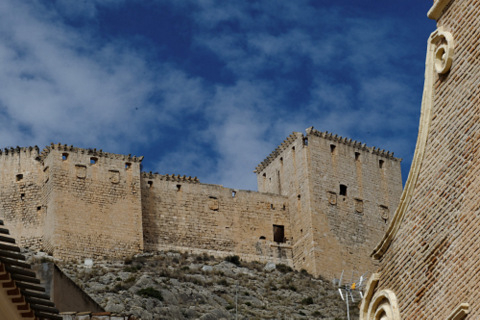 hinting at the importance of this dynastic family and the rôle they played in shaping the regions history.
hinting at the importance of this dynastic family and the rôle they played in shaping the regions history.
The family first began to rise in power during the 13th century and played an important role until as late as the 19th century, although they were at the height of their power and influence in the 15th and 16th centuries.
Origins of the Family
The true origins of the Fajardos are shrouded in mystery, although according to some accounts the Fajardos originally came from Ortigueira, in Galicia, and arrived in the Kingdom of Murcia during the invasion by Aragón between 1296 and 1304, bearing the surname Gallego. However, there is no specific historical evidence to back up this story.
During this era, Spain had not yet become one country and comprised a number of kingdoms, the most relevant to the history of Murcia being those of Castilla, Léon, Aragon and Granada. Castilla and Aragón were 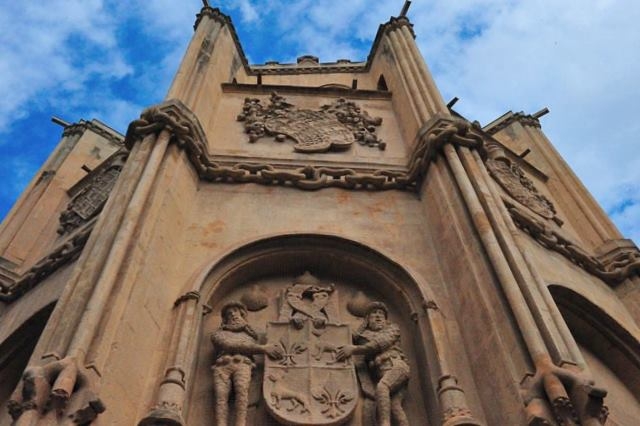 both independent, ambitious kingdoms, with their own Catholic monarchies, and had both been engaged in a slow push down to the south of the peninsula in a bid to expel the Moors from Spain and take control of their territories, supported by powerful religious orders of warrior knights such as the Knights Templar and the Order of Santiago.
both independent, ambitious kingdoms, with their own Catholic monarchies, and had both been engaged in a slow push down to the south of the peninsula in a bid to expel the Moors from Spain and take control of their territories, supported by powerful religious orders of warrior knights such as the Knights Templar and the Order of Santiago.
In 1243, the Kingdom of Murcia was surrendered to Prince Alfonso of Castile, later King Alfonso X, who sealed an alliance with the Kingdom of Aragón by marrying the daughter of King Jaime I of Aragón, Violant. 20 years into his reign there was a serious Moorish uprising, crushed with the assistance of Aragonese forces, the price for military assistance being the granting of lands to noble families who had supported the throne and the expulsion of the Moorish population from the region.
When Alfonso died succession war broke out, which culminated in the invasion of the Region of Murcia by the Kingdom of Aragon, and if the stories are true, this is the moment when the Fajardos arrived in Murcia.
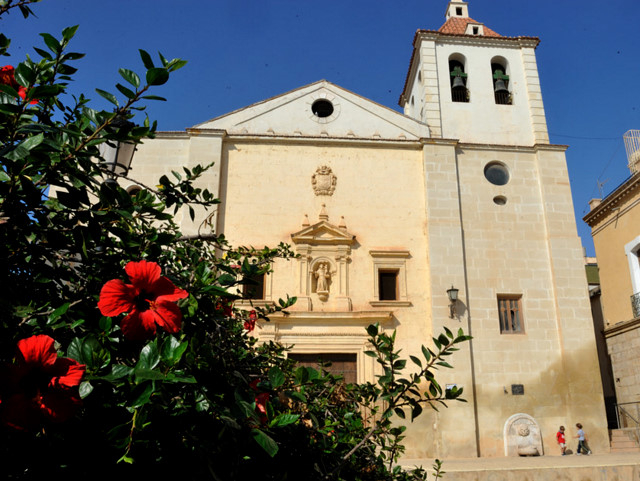 No monarch in this era had absolute power, and relied on a complicated diplomatic balancing act to maintain the support of the nobility whilst also ensuring that no family became too powerful to challenge their own power base.
No monarch in this era had absolute power, and relied on a complicated diplomatic balancing act to maintain the support of the nobility whilst also ensuring that no family became too powerful to challenge their own power base.
The monarchs granted privileges and profits to those among the nobility who supported them, these noble families becoming absolute rulers in their own fiefdoms, holding control over their territories and squeezing the maximum possible profit from their land through the taxes they imposed and raised.
In the late 15th century Spain was united through the marriage of Isabella of Castile and Ferdinand of Aragon, the Catholic Monarchs as they are usually referred to, who conquered Granada and expelled the Moors from Spain.
They established the basis of the modern State: one true faith (this was in reality the only thing uniting the two kingdoms from which the couple came), one army and one territory. And upon their ascent, and successful defeat of the Moors, they consolidated their power by rewarding their supporters, amongst them the Fajardos.
The most important Fajardos
Pedro López Fajardo, Mayor of Ceuti and Pliego
The first mention made of the family in historical documents concerns Pedro López Fajardo, who reached the  position of Mayor of Ceutí and Pliego in the first third of the 14th century, apparently through his links with the important military Order of Santiago, which had assisted the Kings of Castilla in their "reconquista" of Spain, and battles to expel the Moors from Spanish soil.
position of Mayor of Ceutí and Pliego in the first third of the 14th century, apparently through his links with the important military Order of Santiago, which had assisted the Kings of Castilla in their "reconquista" of Spain, and battles to expel the Moors from Spanish soil.
Alfonso Yáñez Fajardo I
The first “Adelantado” (Governor) in the family was Alfonso Yáñez Fajardo I in 1383, who was appointed by Juan I. He overcame serious internal conflicts in the kingdom of Murcia, won a great victory over Farax ben Reduán, a local chief from Granada, at Puerto de la Olivera, and also lent support to Juan I in his Portugese campaign in 1382.
Alfonso Yáñez Fajardo II
After a gap of 18 years his son, Alfonso Yáñez Fajardo II, occupied the same position, which he held from 1424 to 1444, and after his death the post was handed down from generation to generation within the family. He was the son of Yáñez Fajardo I by his second wife, Teresa Rodríguez de Avilés, and this second line of descent became the one to hold the title.
Yáñez Fajardo II had a military career on the border with the kingdom of Granada, and took part in various campaigns between 1433 and 1438. He captured Xiquena and Tirieza, and was the first to conquer the future homeland of his family in Vélez Rubio and Vélez Blanco, (now in Almería) as well as various parts of the Almanzora valley. Most of his gains were lost after his death, when the forces of Granada were superior to those of Murcia.
Yáñez Fajardo II married twice. His first wife was María Rodríguez Mexía, who gave birth to a son, Alonso Fajardo, who died in battle in the Rambla de Vera in 1434. The second wife was María de Quesada, whose son was named Pedro Fajardo, and was the grandfather of another Pedro, the 1st Marqués de los Vélez.
Pedro Fajardo Quesada
His son, Pedro Fajardo Quesada was the first great Adelantado of the Kingdom of Murcia, occupying the post from 1444 until 1482, spanning the reigns of three monarchs (Juan II, Enrique IV and Isabel la Católica - who married Ferdinand of Aragón and united Spain). Before he came of age his cousin, Alonso Fajardo “El Bravo”, disputed his right to the position, and it was Fajardo el Bravo who won the famous victory for Murcia against Granada at the Battle of Los Alporchones on 17th March 1452. However, he was overcome by Pedro at his last stronghold in Caravaca in 1465.
Pedro Fajardo was now the most powerful man in the south-east of the Iberian Peninsula. He was made Lord of Cartagena by Enrique IV, but later returned the land to the Crown in exchange for Los Vélez and Cuevas.
From the 16th century onwards the Fajardo family, had become the most prestigious in the Kingdom of Murcia, cementing family ties with the highest ranks of Spanish nobility.
Pedro Fajardo Chacón (1478?-1546), 1st Marqués de los Vélez
The son of Juan Chacón, treasurer to the Catholic Monarchs, and Luisa Fajardo Manrique, he was a warrior, Adelantado of the Kingdom of Murcia and a trader in the European alum market. He married three times, and 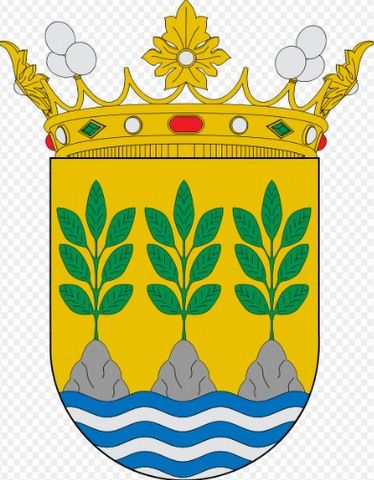 his eldest son and successor Luis Fajardo was born to his second wife, Mencía de la Cueva. On 12th July 1507 Juana “La Loca” bestowed the title of Marqués de los Vélez upon him. His warlike character led him into continual conflict with the strong-willed Bishop of Almería, Diego de Villalán, with constant accusations and counter-accusations flying back and forth while both were in power. These accusations concerned the right of both to raise taxes and Pedro’s refusal to fund the construction of new churches in the towns under his control.
his eldest son and successor Luis Fajardo was born to his second wife, Mencía de la Cueva. On 12th July 1507 Juana “La Loca” bestowed the title of Marqués de los Vélez upon him. His warlike character led him into continual conflict with the strong-willed Bishop of Almería, Diego de Villalán, with constant accusations and counter-accusations flying back and forth while both were in power. These accusations concerned the right of both to raise taxes and Pedro’s refusal to fund the construction of new churches in the towns under his control.
Luis Fajardo de la Cueva (b. Murcia 1509?, d. Vélez Blanco, 1574), 2nd Marqués de los Vélez
Luis Fajardo married Leonor de Córdoba y Zúñiga, the sister of the Great Captain in 1526, and in 1535 he also became Marquis of Molina. He assisted Carlos V in various military campaigns in Europe and north Africa. His rivalry with the Duke of Alba gave rise to various legal disputes between the Council of Los Vélez and the Council of Huéscar concerning boundaries and pasture land. During the War of the Alpujarras (1568-1570) he organized an armed party which launched three military campaigns, and was the rival of the Marqués de Mondéjar, the Captain General of the Kingdom of Granada.
Pedro Fajardo Córdoba (b. Vélez Blanco c. 1530, d. Murcia 1579), 3rd Marqués de los Vélez.
Pedro inherited the title just five years before his death, and spent most of his life as a high-ranking official in the court of Felipe II. He was a Councillor of State, ambassador to Poland and Germany, and chief steward to Felipe’s Queen, Ana de Austria. He fell out of favour in court due to his relationship with Antonio Pérez and, above all, his involvement in the assassination of Escobedo. Sick and disenchanted with court politics, he died on his way to Los Vélez to take possession of his lands and retire there. His death marks the end of the presence of the lord within the boundaries of Los Vélez, and he was the first Marquis to live his whole life outside his territorial possessions.
Towns within the Region of Murcia having important links to the Fajardos and the Marqueses de los Vélez
Librilla
Librilla was the first domain to be acquired by the Fajardo family, when Alfonso Yáñez Fajardo I bought the “villa” from Alfonso de Aragón, the Marquis of Villena, for the sum of 95,000 maravedís. Villena had received the domain in 1367 in return for the support he had given to Enrique de Trastámara. It may be that the Marquis of Villena decided to offload Librilla in 1381 due to it being such a long way from his more important possessions, and Yáñez Fajardo took advantage to become a feudal lord with his own vassals for the first time.
During these decisive years Alfonso Yáñez Fajardo I indulged in a good deal of social climbing, ensuring the status of his descendents in the future. He was linked to the Order of Santiago, became an important figure among both Moors and Christians on the border with Granada, and after being deputy governor of the kingdom of Murcia he was finally named Governor. Despite the strong rivalry of the Count of Carrión, who belonged to the Manuel family, Alfonso became the strongest and most influential figure in Murcian society, retaining the post of “Adelantado Mayor” until his death in late 1395.
It was from his base in Librilla that Yáñez Fajardo began a career which was to establish the position of his descendants as overlords of the kingdom of Murcia, incorporating along his way the domains of Alhama, Molina Seca and Mula.
In 1635 there were 150 people living in Librilla, which was governed by the Marquis’s administration through the “Alcaldía Mayor de Alhama y Librilla”. Prior to this, in the second half of the 16th century, the residents had made a claim against the Marquis in the High Court of Granada, saying that he was raising excessive taxes on them, and they even declared that the town should rightfully be under royal jurisdiction. However, in the end a settlement with the Marquis was reached.
Alhama
Located next to Librilla on the road between Murcia and Lorca, the “villa” of Alhama de Murcia was the second domain to fall into the hands of the Fajardo family. This property was not purchased but was awarded by the 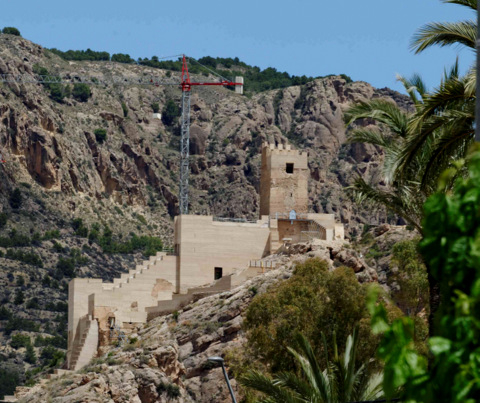 monarchy, the first such gift received by the family. Six years after the acquisition of Librilla, in 1387, Alfonso Yáñez Fajardo I received the domain of Alhama from Juan I in reward for his loyalty to the king’s cause. On his death the dominion passed to his eldest son Juan Alfonso, who in turn passed it on to his son Alonso.
monarchy, the first such gift received by the family. Six years after the acquisition of Librilla, in 1387, Alfonso Yáñez Fajardo I received the domain of Alhama from Juan I in reward for his loyalty to the king’s cause. On his death the dominion passed to his eldest son Juan Alfonso, who in turn passed it on to his son Alonso.
Despite this, the “villa” ended up in the hands of Alfonso Yáñez Fajardo II, the son of the second wife of Yáñez Fajardo I, who was also appointed Adelantado Mayor (chief governor) of Murcia. The two branches of the Fajardo family took opposite sides in the conflict between the princes of Aragón and Juan II, and at the end of the struggle the entire family fortune was taken by Yáñez Fajardo II, who had chosen the winning side.
When the Fajardos created their first entailed estate Alhama was included within it. At the end of the 16th century the Marquises’ administration created the “Alcaldía Mayor de Alhama y Librilla”, based in Alhama. Within this council the Marquis himself ruled supreme, and appointed the members of the council, choosing between the two candidates nominated by every outgoing councillor.
In 1635 the council of Alhama consisted of two mayors and four aldermen. At this time there were 300 people living in Alhama, and the Marquis’ right to receive from them the “alcabala” and “tercia” taxes was justified not by royal approval but by time-honoured tradition.
In 1548 the residents of the town presented a claim in the High Court of Granada against Luis Fajardo de la Cueva, the 2nd Marqués de los Vélez, pointing to sixteen taxes and contributions which had been incorrectly requisitioned by the Marquis’ administration. Agreement on the issue was not reached until 1592, when the case reached the Halls of Justice of the kingdom of Castile.Apart from the castle, among the notable buildings still visible in the villa of Alhama from the time of the Marquises are the Casa Tercia and the Finca del Azaraque.
Molina
The domain of Molina Seca was granted by Enrique III to Governor Alfonso Yáñez Fajardo I in 1395, making it the third territory to become part of the Fajardo family’s possessions (after Librilla and Alhama). The Governor died before he could officially take possession of Molina, which therefore passed directly into the hands of his eldest son Juan Alfonso. On 23rd October 1396 the new lord duly promised to the town council and the residents that the rights and freedoms granted to the villa by the Castilian monarchy would be maintained.
However, in 1413 Juan Alfonso sold Molina for the sum of 4,000 florins to his brother Alfonso Yáñez Fajardo II, who had succeeded his father in the post of “Adelantado” (Governor). Although sparsely populated, the villa was close to the capital city of the kingdom, and was therefore a strategically important possession. In the castle (which no longer survives) María de Quesada had taken refuge with her infant son, the first Pedro Fajardo, from the jealous attacks of her nephew Fajardo el Bravo, Pedro’s cousin.
In 1635 there were barely 100 people living in Molina, and those who did so were heavily taxed, especially the Moors among them. The town’s economy had suffered greatly when the Moors were expelled, and in 1549 the residents had complained about over-taxation: the case was resolved by mutual agreement in 1576.
In 1535, Luis Fajardo was named Marquis of Molina by Emperor Carlos V .As of that moment the eldest son of the House of Vélez bore the title of Marquis of Molina.
Mazarrón
Initially falling within the municipality of Lorca, the settlement known as “Casas de los Alumbres de Almazarrón” grew around the mining activity in the area.
In 1462, Enrique IV awarded the rights to the exploitation of the alum mines in Mazarrón to one of his 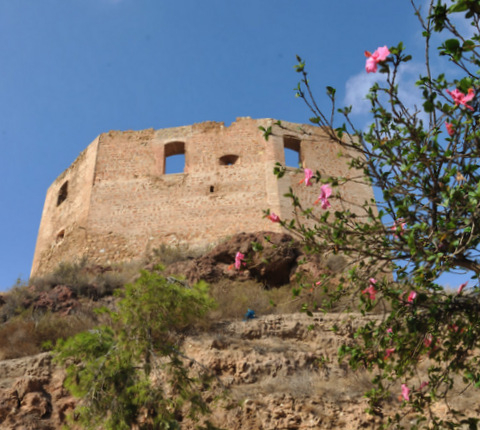 favourites, Juan Pacheco, the Marquis of Villena. In the same year, Villena passed on half of these rights to Pedro Fajardo Quesada, the “Adelantado Mayor” (chief governor) of Murcia and grandfather of the first Marqués de los Vélez, and this sharing of the rights was approved by the king in December 1463. The aim of Villena with this gesture was to ensure that Fajardo, the most powerful man in the kingdom of Murcia at the time, was on his side.
favourites, Juan Pacheco, the Marquis of Villena. In the same year, Villena passed on half of these rights to Pedro Fajardo Quesada, the “Adelantado Mayor” (chief governor) of Murcia and grandfather of the first Marqués de los Vélez, and this sharing of the rights was approved by the king in December 1463. The aim of Villena with this gesture was to ensure that Fajardo, the most powerful man in the kingdom of Murcia at the time, was on his side.
The alum mines were included by Juan Chacón in the domain he established in 1491. The alum was exported by sea to Flanders, where it was used in the textile industry to make permanent dyes. It was also used in the tanning process, in making stained glass and in the illustration of manuscripts, and was even employed as an astringent to prevent bleeding.
Mazarrón was segregated from Lorca by means of a royal warrant issued by Felipe II in 1565, and seven 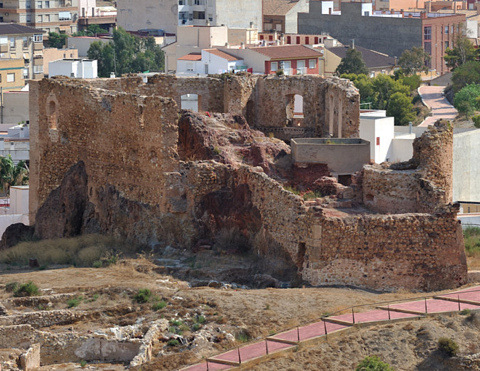 years later, in 1572, it was declared an independent “villa”. The town was divided into two parishes: San Antonio de Padua and San Andrés, with the clergy being linked to the houses of Fajardo and Pacheco respectively. The Marqués de los Vélez built a castle in the town, which still stands today.
years later, in 1572, it was declared an independent “villa”. The town was divided into two parishes: San Antonio de Padua and San Andrés, with the clergy being linked to the houses of Fajardo and Pacheco respectively. The Marqués de los Vélez built a castle in the town, which still stands today.
Activity in the alum mines ceased in 1592 when the resources were exhausted, and industrial activity now centred on ochre, which had previously been considered an unusable by-product of the mines.
In 1653 the Marquis de los Vélez appointed men to various posts in Mazarrón: there was a deputy governor, a treasurer, a priest and his verger, guards, cattle herders, a castle gatekeeper and a tax collector, although there are records of disputes with some of these at a later date when the mines were exhausted and the Marquis lost interest in paying to protect something on which he put no value.
Mula
Even before he took control of Librilla, in 1373 Alfonso Yáñez Fajardo I had bought the land and water in La Puebla de Mula from the council of Mula. He was not in control of the local jurisdiction at the time, but this  purchase opened up the horizon of his future ambitions.
purchase opened up the horizon of his future ambitions.
His son, Alfonso Yáñez Fajardo II, received total control of Mula on 12th September 1430 from King Juan II, in recognition of his withstanding the attempt by Prince Enrique de Aragón to take control of the title of Marquis of Villena.
The leading families of Mula never really accepted this royal gift being made, and they continually levelled accusations of unfair treatment against the Marquis de los Vélez and his successors. These accusations are a constant feature in the history of the Marquises de los Vélez, as can be seen in the message written by the Governor General to the Mayor of Mula in 1653: “The complaints received by the estate are numerous, particularly from the “villa” of Mula”.
The complaints even questioned the judicial status of the villa, with the local families believing the town to have come under royal jurisdiction since the time of Alfonso X “El Sabio”, rather than that of the Marquis. This case was heard in the Chancery of Granada, where the rights of Fajardo were upheld, although with reduced influence on the town council.
The official record books of the house of Vélez make extensive mention of this case and the many others presented by Mula. In one such case a request was made for limits to be set on the powers and jurisdiction of the Mayor, in another they requested that it should be the council who appointed the sheriff and the town scrivener, in another that the council should appoint town clerks, etc etc. It was not without a certain admiration that the Governor General was forced to admit that the people of Mula were tough nuts to crack, adding that this attitude seemed to be passed on from one generation to the next by their mothers’ milk.
Mula was the seat of the Marquises’ administration during the 16th century. The 4th Marqués de los Vélez, Luis Fajardo Requesens, installed his court in the town, and the Marquises’ archive was split between the Casa de Palacio and the Casa del Castillo, which was built by the 1st Marquis.
At this time Mula was the largest town under the control of the Marqués de los Vélez, with 1,000 inhabitants, followed by Vélez Rubio with 500.
Included in the gift of Mula received by the Fajardos was Campos, which the 1st Marqués de los Vélez had to defend against a demand made by Luisa Gómez, the widow of Íñigo López de Ayala: she believed that she should inherit it from her late husband.
Murcia capital
There are many remnants of the Marqueses de los Vélez in Murcia, but the most imposing and best known 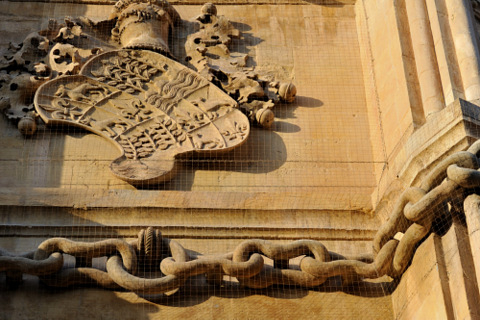 is the Chapel of Los Vélez in Murcia Cathedral. This imposing chapel juts out from the side of the Cathedral into public land, a clear statement of the power and influence held by the family at the time, the whole a distinctive, individual design, incorporating romantic, gothic and mudéjar influences. The chapel was started by Juan Chacon in 1490 and completed in 1509 by Pedro Fajardo.
is the Chapel of Los Vélez in Murcia Cathedral. This imposing chapel juts out from the side of the Cathedral into public land, a clear statement of the power and influence held by the family at the time, the whole a distinctive, individual design, incorporating romantic, gothic and mudéjar influences. The chapel was started by Juan Chacon in 1490 and completed in 1509 by Pedro Fajardo.
One of the most striking elements of the chapel is the chain of stone encircling the chapel, a symbol of the strength and power of the family who built it, a statement of power seen in other monuments of the era including the Casa de los Momos in Zamora, the Royal Hospital in Santiago de la Compostela and the Colegio de San Gregorio in Valladolid.



